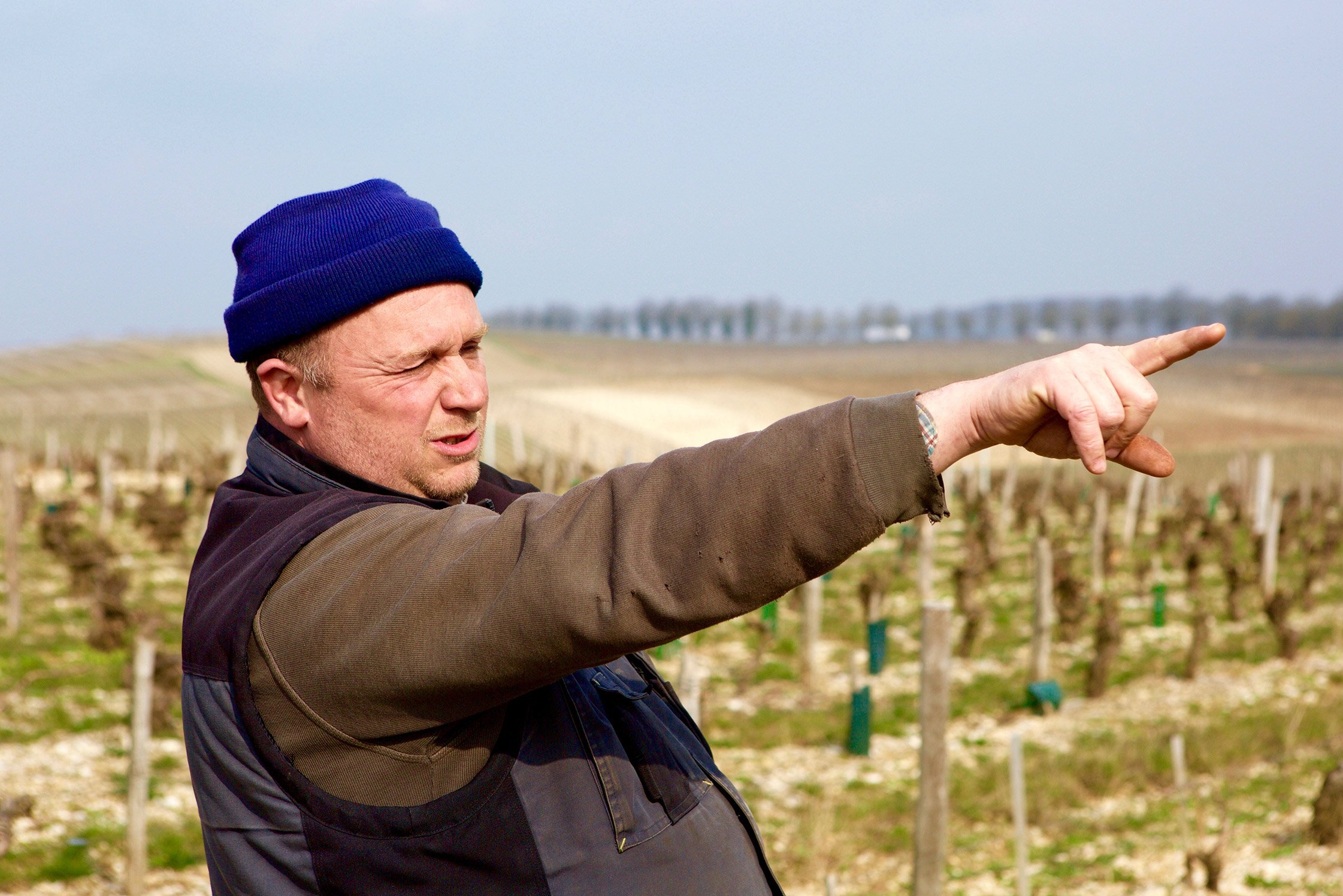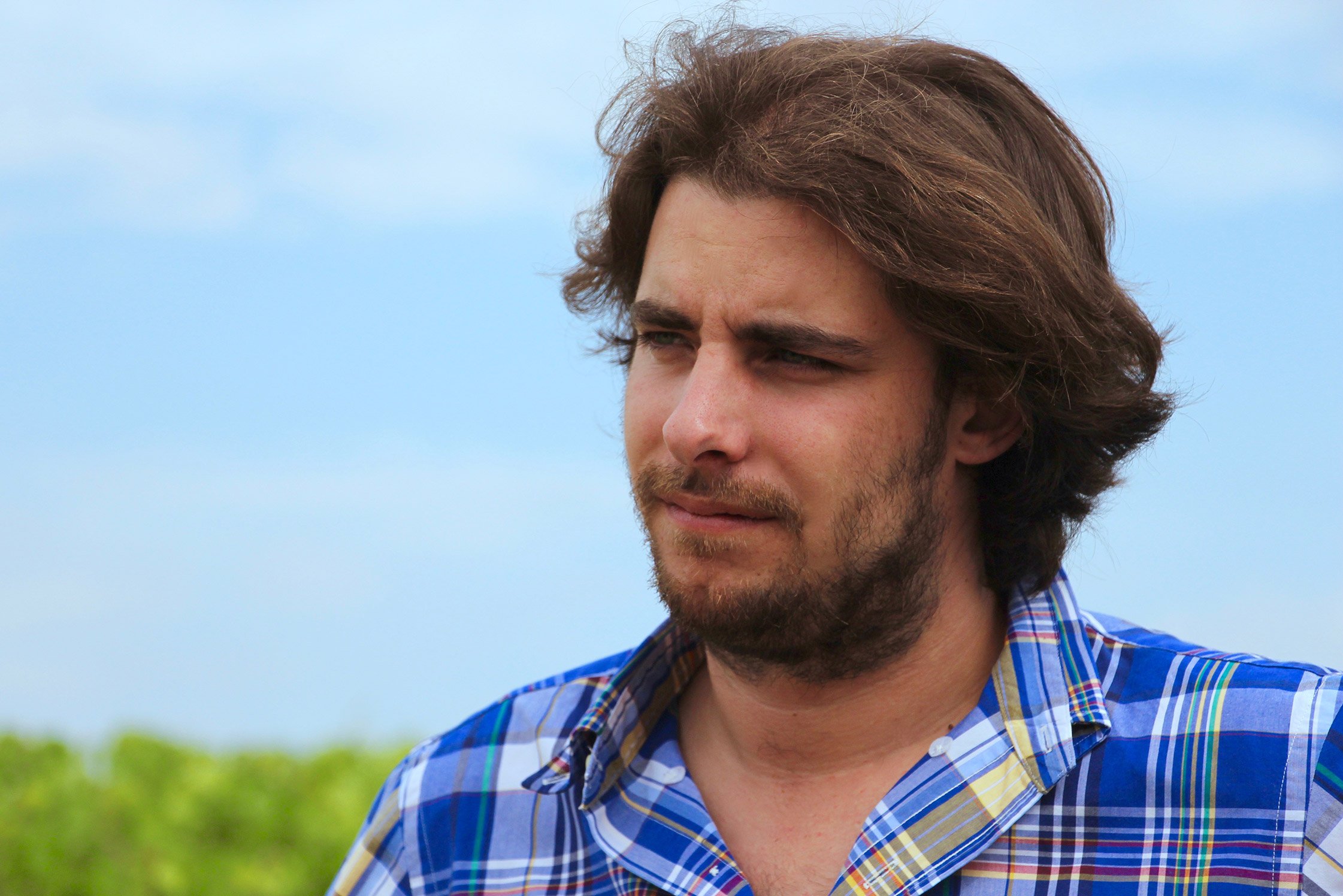François Crochet (left) and Romain Collet (right) are two of the most talented vignerons from their regions. When we have access to the limited production of their value wines, we take everything we can.
A Short Story On The Wines
François Crochet’s Coteaux du Giennois is no ordinary wine. It’s a special parcel on the right bank (east side) of the Loire River, just across from Sancerre and north of the Pouilly-Fumé appellation. Its soils are composed of glacial morraines littered with rounded silex rocks, rather than the jagged ones found on the southeastern area of the Sancerre appellation.
What’s most unique about this vineyard site is its genetic material. With all the talk we make about geological imprints on wine, differences within the plant material can influence a wine in just as many different ways. Ancient cultivars have had a difficult road within the last century as many low-production, high-quality strains of specific grape varieties were ousted for those with a higher production than quality—a common challenge in much of the more successful European wine regions since World War II.
François Crochet’s Les Perrois Sauvignon Blanc comes from a communal nursery project that began almost twenty years ago. It’s planted to Sauvignon Blanc, Pinot Noir and Gamay, the three grapes that can legally bear the Coteaux du Giennois appellation. Within the vineyard is planted a collection of around two-hundred and fifty massal selections (well-adapted, ancient strains of a grape variety) collected by the local, well-known viticultural consultant company called, Ceps-Sicavac. The Ceps-Sicavac team, led by one of the most talented and progressive viticulturalists of our time, François Dal, worked with many vignerons in this part of the Loire Valley to isolate some of the oldest vine parcels and to observe them over a three-year period before making the selections to preserve and cultivate within Les Perrois.
François Crochet preserves Les Perrois’ fresh, bright characteristics by fermenting and aging it in stainless steel for six months before bottling. Its general profile falls within the classic Sauvignon nuances of the region that includes iodine, wet stone, flint, citrus, and in 2019 a more generous helping of taut white and yellow stone fruit.
Located a short twenty minute car ride toward the southwest from Chablis, and north of the Pinot Noir growing region, Irancy, is Jean Collet’s Saint-Bris vineyard. Saint-Bris is a Burgundian outlier where Sauvignon Blanc and Sauvignon Gris have been the recognized and permitted grape varieties since the establishment of the AOP in 2003. While it can be somewhat routine for experienced tasters to recognize the differences between Chablis and Loire Valley Sauvignon Blanc, the differences between the latter and Saint-Bris present a greater challenge—same grape, same general geology, similar climate. Perhaps the greatest element of difference is the wealth and prosperity of Sancerrois by comparison to growers from Saint-Bris. Sadly, most of Saint-Bris is a virtual wasteland of chemical farming—not a surprising outcome for a wine that can rarely match even the price of a Petit Chablis AOC wine, even though it requires the same amount of effort to grow and produce. However, with the continuous rise in the price of Sancerre, when Romain Collet presented the opportunity for us to purchase some Saint-Bris he made from the well-run, sustainably farmed vineyard of his friend, we immediately jumped on it. Romain has developed a golden touch with white wine, so it was a no-brainer.
According to Romain, Sauvignon Blanc and Sauvignon Gris were already a regular part of what is today’s Saint-Bris appellation as early as the eighteenth century; also found there was Chardonnay, Aligoté and Pinot Noir. The limestone soils are particularly poor in Saint-Bris, compared to Chablis, and they’re well suited to stifle Sauvignon Blanc’s vigorous nature, whereas Chardonnay there would struggle because of too much stress.
Some years ago, I visited Saint-Bris in the early spring with Romain to better understand the appellation and to visit a friend of his who makes wine there on a very small scale. As we drove through, row after row of vines exposed the dreary farming conditions ubiquitous in the appellation—it was almost completely bare land without anything green in sight, except the vine shoots. There is at least one maker who works in organic and biodynamic culture, but few more, if even that.
Romain’s grapes come from a friend’s vineyard on a north-facing slope and are farmed using sustainable methods without the use of any herbicides or pesticides. With quality in mind, Romain treats the grapes with the same respect he does with his organically farmed Chablis wines. His vineyard team picks the grapes into small 20-kilo boxes and in the cellar they start their fermentations spontaneously, and aging is done in old French oak barrels in order to round out the wines and soften the naturally striking acidity. The version of Saint-Bris at Domaine Jean Collet follows suit with the Chablis range, characterized with an increased level of suppleness, compared to what is typically found with Saint-Bris wines, so it lands stylistically closer to those grown in the upper Loire Valley.
Click on links to see other wines from Jean Collet & François Crochet




